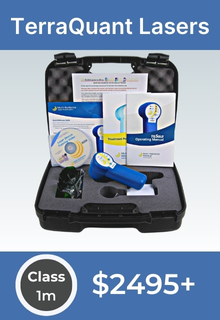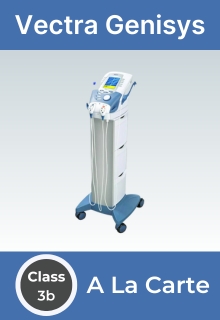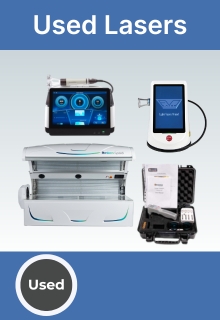Carpal Tunnel Syndrome
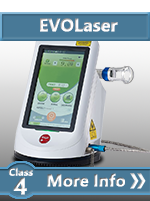
EVOLaser
- 9W-27W
- Single, Dual and Quad Wave
- Continuous and Pulsed
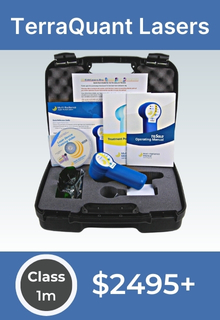
TerraQuant / MR4
- Professional and Home Use
- Up to 50 Watt Peak Power
- Best Selling U.S. System

Avant Systems
- The Most Flexible 3b Laser
- Pulsed Sweep and CW
- IR/ Red / Violet
- Broad and Pinpoint
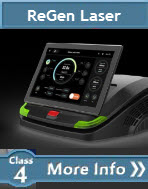
ReGen Laser
- The State of Art
- Class 4
- Up to 6 wave
- Up to 104w

PowerMedic
- Handheld 1W-3W
- Hyperpulsing
- 810nm Danish Design
- Exceptional Quality
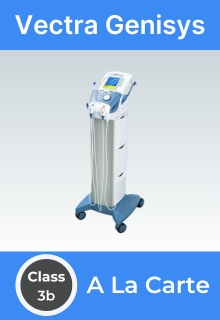
Vectra Genisys
- Pro Only Systems
- Optional Electrical Stim
- 670nm-950nm
- Up to 1.04 Watts Pulsed or CW

Apollo Lasers
- Handheld, Portable, and Desktop Versions
- Broad and Pinpoint
- 2-5 Watts Continuous

3B Scientific
- Multipoint Therapy
- 12 Simultaneous Points
- 660nm and 785nm
- Acupuncture /Trigger Point

Used Systems
- Pro Only Systems
- Optional Electrical Stim
- 670nm-950nm
- Up to 1.04 Watts Pulsed or CW

ReGen Pod
- 7.6 kW Pulsed & CW
- Whole Body Pod
- Incredible Results
- The Absolute Best Pod

Guide to Lasers
- Learn About
- Differnt classes
- Power Levels
- Wavelengths
- Max Efficacy

Compare Every Brand
- Compare all the options currently on the market
If you have ever slaved over a typewriter, a keyboard, or perhaps as a hairdresser braiding hair and doing weaves; after hours of working the hands to the bone to finish the job, you may feel sudden pain or discomfort from the wrist area that travels to your fingers and thumbs. Some people mistake this pain as tendonitis, when in reality the culprit of this soreness and stiffness is Carpal Tunnel Syndrome.
Causes of CTS
Carpal Tunnel Syndrome or CTS occur when the median nerve, located in the wrist becomes agitated. When constant pressure is put on this nerve, it will cause the hand to become numb and leave a tingling sensation in the middle fingers and thumb. Though this condition is quite common in both males and females, it happens more frequently in women. Another name associated with this kind of condition that targets the nerves in the hand is Repetitive Stress Injuries. Not only does it affect the hands, CTS sufferers may also feel pain in the shoulders and forearm too.
Symptoms of CTS
Carpal Tunnel Syndrome does not happen overnight, sometimes it takes weeks or months before symptoms show up, making it evident that something is wrong or out of order. At first, a person may feel slight tingles and numbness; however, if gone unchecked by a doctor, a patient may experience the loss of feeling the sensation of hot and cold objects. For instance, you may not be able to feel the sensation of holding a glass of iced tea. Another symptom of this disorder is weakness in the hands, not being able to hold on to items like a cup or a plate. In severe cases of CTS, hands can feel swollen and tight without any noticeable appearance of puffiness. Although you may be employed at a job using your hands all day, when symptoms do occur that relate to CTS, you may notice that the flair ups happen at night, away from your work station and making its presence known when you are at rest. When there is stress on the median nerve and tendons in the carpal tunnel, other symptoms may include losing strength and sensation on top of the pain, tingling and numbness.
Who Gets Carpal Tunnel Syndrome?
According to research, the reason there are more women than men suffering with CTS, is the simple fact that the carpal tunnel in females tends to be much smaller than in males. It has also been noted that the hand used the most will be the one experiencing the symptoms first. It also will carry the most pain. If a left- handed person comes down with Carpal Tunnel Syndrome, the left hand is more likely to be affected first. Other people at risk for developing this disorder are those suffering with diabetes. If you are an assembly worker, a seamstress, or you work in the factory or packing industry, you are likely to develop CTS. People in this line of work have a higher risk of CTS than someone working on a computer or typewriter all day. Pregnant women and those going through menopause are also at risk for developing Carpal Tunnel Syndrome.
How Do You Treat Carpal Tunnel Syndrome
Before one can be treated for Carpal Tunnel Syndrome, a doctor must diagnosis the disorder, ruling out the possibilities of other conditions that may have similar symptoms. After all, you may have wrist and finger pain, but it does not necessarily mean that you have CTS. One way to diagnose CTS is with an Electromyography or EMG testing. According to Doctor Daluiski, an Orthopedic Surgeon at New York-Presbyterian Hospital, he states that when it comes to treating CTS, the doctor has to make room for the nerve, relieving the pressure inside the carpal tunnel. Options for treatment include medications, splints, braces and surgery. For medications, a doctor may suggest or prescribe steroid injections for temporary relief.
How Do You Prevent Carpal Tunnel Syndrome
When one suffers from CTS, it is necessary to avoid adding stress and strain to the wrist. Do not keep your wrist in a twisted or bent position too long. Try to keep your wrist straight. When grasping objects; remember to use the hand and fingers together. Avoid picking up items using just the thumb and pointer or index finger. Stay away from repetitive movements of the hand; for instance, holding something the same way or in the same position for hours can cause a problem. Last but not least, exercising the hands and arms is important to condition and strengthen the muscles in the arms and fingers.
For more interesting information on Carpal Tunnel Syndrome, please see the following links.
What is Carpal Tunnel Syndrome?
Myths, Facts, Diagnosis and Treatments of Carpal Tunnel Syndrome
The Facts of Carpal Tunnel Syndrome
Carpal Tunnel Syndrome: Symptoms, Signs and Treatment
Who is at Risk of Developing CTS?

